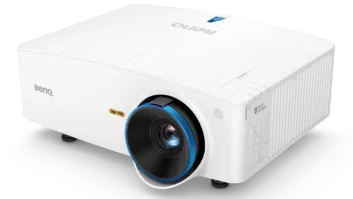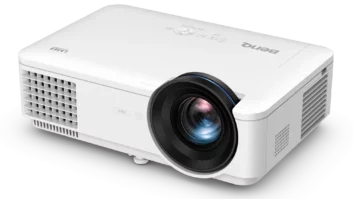Taipei, Taiwan — BenQ may keep the Siemens brand from dropping out of the U.S. handset market for the second time in less than a decade.
Under an agreement between the two companies, Siemens will hand over its money-losing global handset operation to Taiwan-based consumer electronics supplier BenQ, pay 250 million euros ($206.7 million) to BenQ, and buy 2 percent of BenQ stock worth 50 million euros ($61.4 million). BenQ will also get exclusive rights to the Siemens name on handsets for 18 months and five-year exclusive rights to the joint BenQ-Siemens brand after the deal’s closing, expected in September.
BenQ also gets Siemens’s handset factories, sales and marketing operations, R&D operations, employees, key executives and, for an undisclosed number of years, free access to Siemens’s handset IP.
The combined cellphone entity will be headed by Siemens’ handset CEO Clemens Joos and be headquartered in Munich.
Strategy Analytics VP David Kerr called the deal “a desperation move by Siemens and a positive opportunity for BenQ.” In April, Siemens announced plans to spin off and sell a majority stake in its handset business, which lost $169 million in the second quarter. Multiple handset companies, including LG and Samsung, took a pass, Kerr said.
For BenQ, the deal delivers “distribution strength,” and the key asset that Siemens offers is “distribution and operator relations in Europe, Central America and Latin America,” Kerr said. North America “is not a big factor in this deal, quite frankly, as Siemens is quite possibly one of the best case studies on how not to compete in the North American market,” he added.
Although BenQ is one of the world’s largest makers of handsets when its contract manufacturing volume is included, the company entered the U.S. market only in late 2004. Siemens entered the U.S. market in the mid-1990s, left in 1998 and returned in 2000. In the United States and worldwide, both companies focus on GSM handset technology, but Siemens has begun offering wideband-CDMA handsets overseas.
BenQ has not commented on its U.S. plans, but Kerr said he expects Siemens’ San Diego offices and R&D facilities “probably will remain open.” Nonetheless, he said, “I don’t expect much traction for the entity in the United States” because BenQ will likely focus on leveraging Siemens’s far larger European share. “The U.S. will be important to them, but they face a steeper learning curve here,” where Siemens’s first-quarter unit share was less than 1 percent, he said.
As if underscoring Kerr’s point, Siemens and BenQ failed to mention Siemens’s U.S. operations at all in their official statements. In fact, Siemens’ CEO Klaus Kleinfeld left out a U.S. reference in a statement that said Siemens and BenQ “complement one another perfectly in terms of geography.” He cited BenQ’s strength in Asia and Siemens’s strength in Europe and Latin America.
The companies cited other advantages to the deal. BenQ said it can reduce development time and costs at the Siemens unit, leverage the globally recognized Siemens name, and achieve economies of scale in a market where low-volume suppliers can’t compete profitably. In calendar 2004, Siemens shipped 49.4 million units worldwide, and BenQ shipped 2.8 million BenQ-branded handsets for a combined total of 52.2 million units, or 7.7 percent market share, Strategy Analytics said.
When handsets made by BenQ for manufacturers such as Motorola and Nokia are included, BenQ’s shipments hit 15 million in 2004, said Kerr, but BenQ’s contract manufacturing volume is expected to fall dramatically this year because Motorola and Nokia “are scaling back use of BenQ for a number of reasons.”
Scale is needed, especially in the United States, to compete profitably, Kerr said. Nokia, Motorola and Samsung “have scale efficiency and can spread the huge marketing and R&D costs needed for global participation across a big enough base to be profitable,” Kerr explained.
“Overall, the North American market is brutally competitive, with almost no one making a profit,” he continued. “The fragmented technology picture, dominant operator position in the value chain, and stringent operator specifications make the market the most competitive of the major regions.”
Profitable handset makers, he contends, have fallen into two camps: Scale leaders Nokia, Motorola and Samsung, each of which has pushed the 100 million-unit mark and beyond and achieved profitability. The second group consists of “specialist” vendors such as Sharp, which was first to market with camera phones, and Sanyo, whose only U.S. carrier is Sprint. Such companies typically ship 15 million units or less, yet they deliver “modest” profits because of stringent controls on marketing expenditures, he said.
The companies in trouble sell 15 million to 30 million units per year and “have tried to compete on marketing and brand development but lack the scale to provide the returns of the big three or big four,” Kerr noted.
In the United States and worldwide, Siemens was handicapped not only by lack of scale but also by marketing and design missteps, said Strategy Analytics’ analyst Eddie Tapiero. “Siemens was targeting entry-tier [prices] with mid- and high-tier features, which was not profitable and led to the downfall of the firm,” he explained.
“BenQ has been profitable while addressing the mid- and high-tier devices with a more robust and diverse platform.” Siemens, he noted, offers mostly bar-type phones, while BenQ has a variety of clamshell-, bar-, and swivel-type phones.
In 2004, Taiwan-based BenQ began marketing cellular in the United States and North America as part of a larger effort to penetrate the U.S. consumer electronics market. To date, it hasn’t closed a contract with U.S. carriers, but it has contracts in Mexico, said BenQ Americas’ president Ralph Tang.













